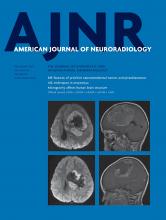Medicine advances with time, and so does our understanding of disease processes and therapy. Stroke has been the subject of intense research and study during the past few decades and tremendous advances have been made. These include a better understanding of the mechanism of stroke and the advent of endovascular clot-retrieval therapy. The literature backing these therapies has been quite impressive, and the recent trials have changed the current treatment guidelines. On the basis of clinical presentation, NIHSS, modified Rankin Scale score, and advanced imaging, patients may be eligible for thrombectomy up to 24 hours after the onset of symptoms.
One of the effects of our study of stroke has been a better understanding of what we mean by the term “stroke.” In the past, a stroke had been defined as an acute neurologic deficit. Two primary processes had been identified as etiologies of such deficits: hemorrhagic and ischemic events. Thus, the terminology of hemorrhagic or ischemic stroke entered the medical lexicon. Today, however, the word “stroke” is much more closely aligned with the term “ischemia” than anything else. Stroke in the emergency setting is now understood to be an acute ischemic event.
Ischemic events are caused by hypoperfusion to a brain region, either secondary to vascular occlusion or hypoxia. In the setting of contemporary stroke research and therapy, a vascular occlusion is the most common and important etiology. In fact, identifying the location of the vascular occlusion becomes a critical diagnostic question in triaging these patients for appropriate stroke therapy in the emergency setting.
In this setting, using the term “hemorrhagic stroke” is ambiguous. Neither does it refer to any specific etiology of stroke, nor does it define any particular manifestation of stroke. Intracranial hemorrhages do exist and can be caused by a number of different factors. Neuroradiologists have long recognized this. A recent systematic review of literature presented at the American Society of Neuroradiology found that the term “hemorrhagic stroke” is almost never used in the neuroradiologic literature.1
On the contrary, the term is often used in the neurology literature and is still taught in medical school curriculum, influencing the lexicon of emergency medicine trainees. The problem with the term “hemorrhagic stroke” is that it is both scientifically inaccurate and creates unnecessary confusion in the emergent setting in which critical decisions regarding stroke care need to be made.
It is not uncommon for the radiologist to be asked, “Is the stroke ischemic or hemorrhagic?” The latter carries almost no meaning for the radiologist. There are a number of reasons (tumor, trauma, hypertension, and so forth) and several different manifestations (subarachnoid, intraparenchymal, intraventricular, extra-axial, and so forth) of intracranial hemorrhage, and most have nothing to do with stroke as we understand it. Although it is true that an area of brain ischemia can bleed (ie, hemorrhagic transformation of stroke), this is a complication of stroke, not an etiology.
In some cases, an emergent endovascular intervention may be required for intracranial hemorrhage, such as aneurysmal subarachnoid hemorrhage. Despite the similarity in treatment, hemorrhage should not be conflated with ischemia. The disease processes, including the mechanism of disease and specifics of therapy, are distinctly different.
It is time, therefore, to do away with this unnecessary and superfluous term of “hemorrhagic stroke.” The new guidelines from the American Heart Association/American Stroke Association have made progress toward this goal. The term has been removed and replaced with more descriptive definitions of stroke.2 It does not, however, go far enough. Given our current state of understanding of the mechanism of stroke, and perhaps, more important, the development of emergent thrombectomy, it is time to adopt simple and clear language to communicate the disease process. In the emergent setting, our understanding of stroke is brain ischemia, which is most commonly caused by a vascular occlusion. Intracranial hemorrhages are not “strokes.” Therefore, it is time to permanently do away with the outdated term of “hemorrhagic stroke.”
ReferenceS
- © 2019 by American Journal of Neuroradiology












